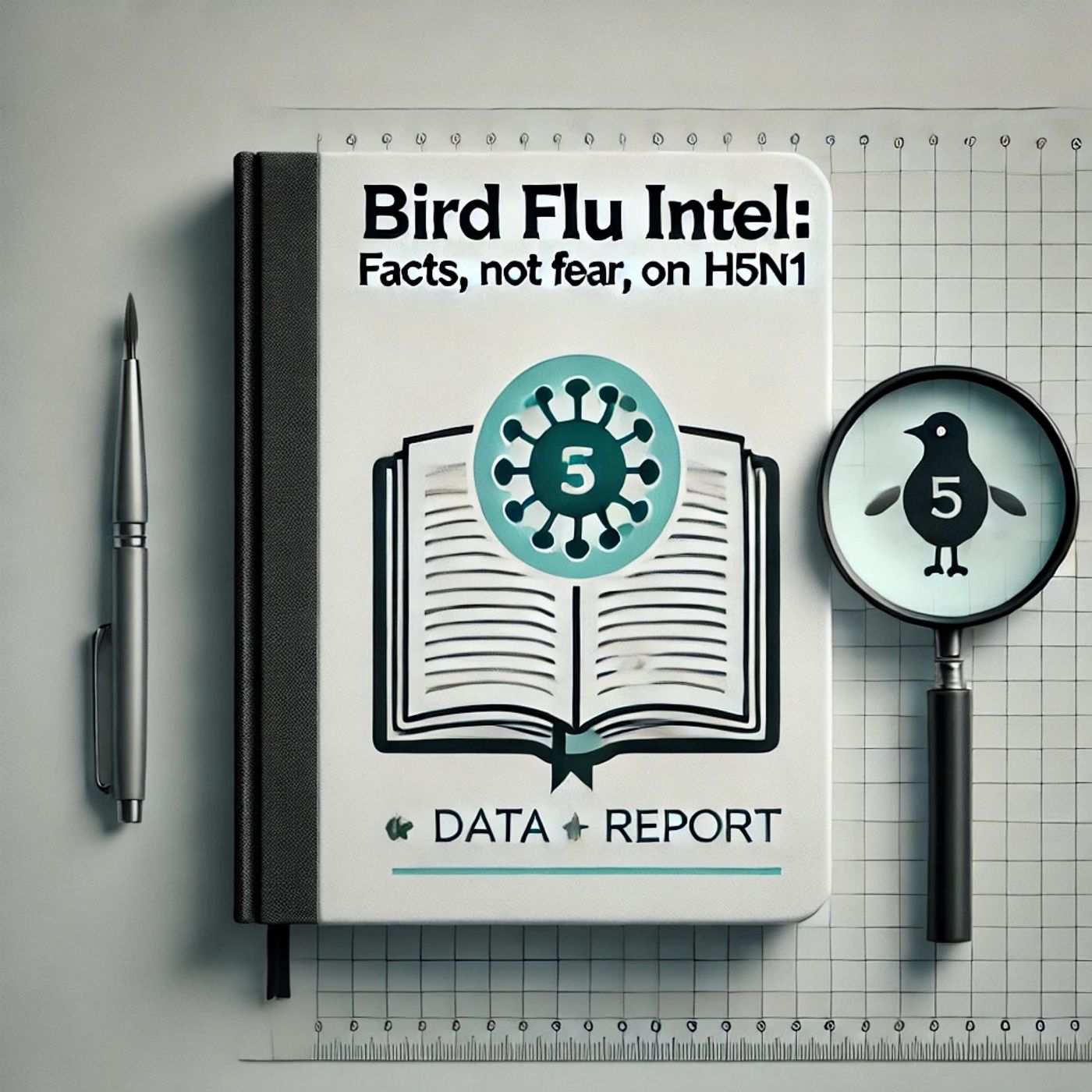Podcast Episode Details
Back to Podcast Episodes
H5N1 Bird Flu Myths Debunked: What You Really Need to Know About Transmission and Risk
Welcome to Bird Flu Intel: Facts, Not Fear, on H5N1—your three-minute deep-dive cutting through the noise to deliver what you need to know about this evolving virus.
Today, we tackle some of the most common myths circulating about H5N1 bird flu and arm you with facts, not fear.
Let’s get right into those misconceptions.
First: H5N1 bird flu is “highly contagious between humans.” According to the CDC and the Global Virus Network, almost all human cases worldwide, including recent U.S. cases, have been linked to direct contact with infected animals—not human-to-human spread. In 2025, although 26 new human infections with H5N1 were reported globally, no person-to-person transmission was found. The current risk to the public remains low.
Second: Eating poultry, eggs, or milk can give you H5N1. Here’s the science: Cleveland Clinic and the CDC explain that proper cooking destroys the virus. The U.S. food supply is tightly regulated—any flock with detected avian flu is immediately withdrawn from the food chain, and pasteurized milk is safe. You won’t get bird flu from your groceries.
Third: The bird flu outbreak will inevitably become a pandemic. While global virologists acknowledge that the virus’s ability to infect mammals, including dairy cows, is a worrying development, the World Health Organization, the CDC, and top virologists stress that human-to-human transmission remains extremely rare. They emphasize that robust surveillance and swift responses are keeping the risk in check, and that continued global vigilance is essential.
Fourth: Some believe H5N1 bird flu is “just like seasonal flu.” But these are different viruses. Most people have no immunity to H5N1, making outbreaks more serious. Also, H5N1 tends to cause much more severe illness in birds and, rarely, in humans. According to Science and CDC reporting, the mutation risk is real but not realized—close monitoring continues.
Why does misinformation like this spread? Often, alarming headlines, social media rumors, and misunderstandings about viruses go viral far faster than facts. In a national health emergency, hype can spread panic and erode trust. This misinformation makes it harder for people to take actions that actually matter, and distracts public health officials from targeting the true sources of risk.
So, how can you separate fact from fiction? Here are some tools:
- Check the source: Is the information from organizations like the CDC, World Health Organization, or established academic centers?
- Look at dates: Is the info up to date? Viruses evolve and so does our understanding.
- Watch for consensus: Are multiple trusted health agencies saying the same thing?
Here’s the scientific consensus as of today: H5N1 bird flu is widespread in wild birds and has caused major poultry and recent dairy cow outbreaks. There have been isolated infections in humans, nearly all due to close contact with animals. Sustained person-to-person spread has not occurred, but experts warn that ongoing mutation could change the risk landscape. That’s why they urge continued vigilance and global cooperation.
Where is there legitimate uncertainty? Top virologists highlight that H5N1’s occasional spillover into mammals—like dairy cows—warrants close monitoring, since new mutations could potentially change how the virus spreads. The precise risk these changes pose, or the mutations needed for efficient human transmission, are active research areas.
Thanks for tuning in to Bird Flu Intel: Facts, Not Fear, on H5N1. Come back next week for more myth-busting, rational science with Quiet Please. This has been a Quiet Please production. For more, check out Quiet Please dot A I.
For more http://www.quietplease.ai
Get the best deals https://
Published on 3 days, 17 hours ago